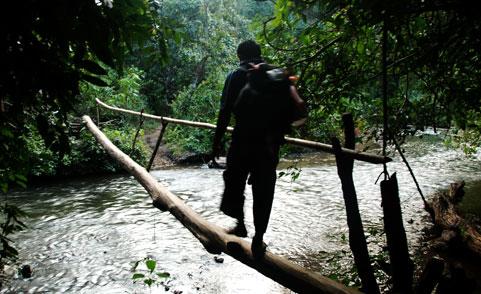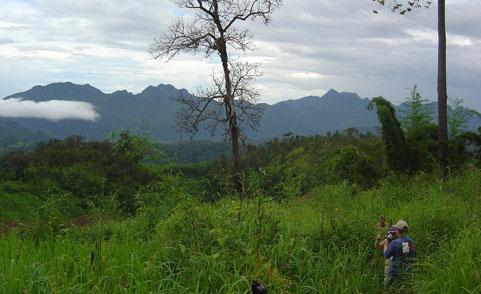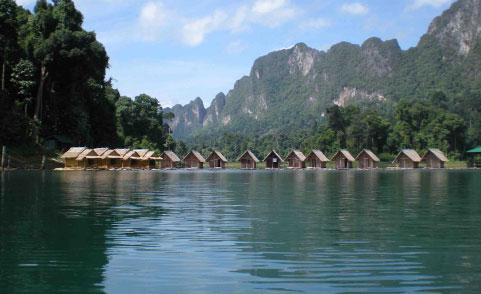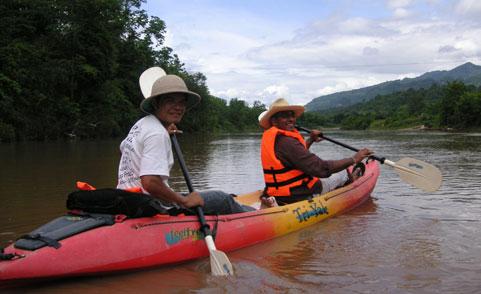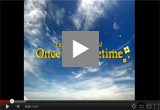Doi Suthep-Pui National Park
Doi Suthep-Pui used to be known as Doi Oi Chang. Its new name comes from the name of a hermit, Prarusiwasuthep who lived at Doi Suthep-Pui was a protected forest. In 1973, The Royal Forest Department decided that Doi Suthep and 13 other forest areas in the country should eventually be national parks. The Royal Forest Department sent Mr.Panya Boonsomboon to survey the area.
After that, the national park committed decided that only forest in good condition should be included in Doi Suthep-Pui National park and areas occupied by villagers should be excluded. In 1981, as the 24th national park of Thailand which encompasses 161.06 square kilometers. The following year, an additional 100 square kilometers were annexed to the park, bringing the total to 261.06 square kilometers.
Doi Suthep, Doi Buakha and Doi Pui are the three main peaks in the park. The highest peak, Doi Pui, rises to 1,685 meters above mean sea levels.Doi Suthep - Pui National Park is noted for its dense forests and watershed areas. It is blessed with the most beautiful environment housing important places of historical and religious interest.
There are two basic types of forest on the mountain: Deciduous forest below about 1,000 m elevation and evergreen forest above. The deciduous is further divided into two kinds, deciduous dipterocarp-oak Forest in the driest areas and mixed evergreen deciduous forest along streams and gullies. Common species are trees of the families Dipterocarpaceae, Fagaceae and Magnoliaceae.
Wildlife in the park includes common muntjac, wild boar, macaque and other small mammals. More than 300 species of birds can be seen here, including red junglefowl, pheasants, eagles, parrots, bulbuls and minivets. Rare species of amphibian, the crocodile salamander that can be found in only four localities in Thailand, one in Doi Suthep.
Tourist Attractions:
A memorial statue to Cruba Sriwichai It is situated at the base of the mountain welcomes pilgrims and travellers asike. Cruba Sriwichai was a teacher and a forest monk. He was a very wise man and the spiritual leader of the local people. People still come to this site to pay homage to Cruba Sriwichai before they ascend the mountain to make merit at Wat Pratat Doi Suthep, which is the spiritual center of Chiang Mai.
Wat Phrathat Doi SuthepWat Phrathat Doi Suthep is a Theravada Buddhist temple in Chiang Mai Province, Thailand. The temple is often referred to as "Doi Suthep" although this is actually the name of the mountain it is located on. The temple is located 15 km from the city of Chiang Mai and is a sacred site to many Thai people. This Buddhist place of worship dates back to the year 1383 when the first chedi was built. It is an important pilgrimage spot for the devout and a legend featuring a white elephant is connecteed to this revered site. There are spectacular views of Chiang Mai city and its surroundings from the top of this mountain. It remains a popular destination of foreign visitors.
Doi PuiDoi Pui, the other peak of the massif, is located close by along a surfaced road as well as through forest paths. There in the shades of pine trees, groups of tourists like to enjoy their picnics and a superb panorama of the landscape. There are several hilltribe villages nearby, inhabited by Meos, Yaos, Akhas, Lisus and Lahus; all accessible by trail. But some of them are gradually losing their identity due to commercialism.
Bhubing Palace The Bhubing Palace is located on Doi Buak Ha, Muang District, Chiang Mai Province. It is the royal winter residence in Chiang Mai where the Royal family stays during seasonal visits to the people in the northern part of Thailand. The palace is also the royal guesthouse for prominent state visitors from abroad. In the past Their Majesties welcomed or granted royal audience to State visitors only in the capital of Bangkok. Bhubing Palace was built in 1961. The construction started initially with only the royal resident building and the guesthouse. The other buildings were additionally built on later dates. Phra Tamnak Bhubing Rajanives was built in northern Thai architectural style called “Ruen Mu” (Group of Houses). The building sits on stilts. The upper floor is the royal residential area while the ground floor houses the royal entourage. The building master plan was design by Prince Samaichalerm Kridagara while Mom Rachawongse Mitrarun Kasemsri designed the building. The construction of the Palace was undertaken by the Crown Property Bureau, under the supervision of Prince Samaichalerm Kridagara, assisted by Mom Mom Rachawongse Mitrarun Kasemsri and Mr. Pradit Yuwapukka. General Luang Kampanath Saenyakorn, the Privy Councilor was assigned to lay foundation stone on August 24, 1961 at 10.49 am. The Construction took 5 months to complete. The first royal visitors to stay at the palace were King Federick the Ninth and Queen Ingrid of Denmark on their royal visit to Thailand in January 1962
Monthathan Waterfall This place is a beautiful, nine-tiered waterfall that flows over a cliff. It is about 3 kilometers from Huay Kaew Waterfall.
Huey Kaew Waterfall It is located near the Cruba Sriwichai Memorial, not far from the main road. Visitors can enjoy picnicking in a scenic setting. You can walk to Wang Bua Ban, a beautiful pool at the base of Pha Ngoeb Criff.
Mae Sa Waterfall
This waterfall is a lovely set of nine falls that a good flow of water all year long. A distance of 100 to 500 meters separates all the falls.

